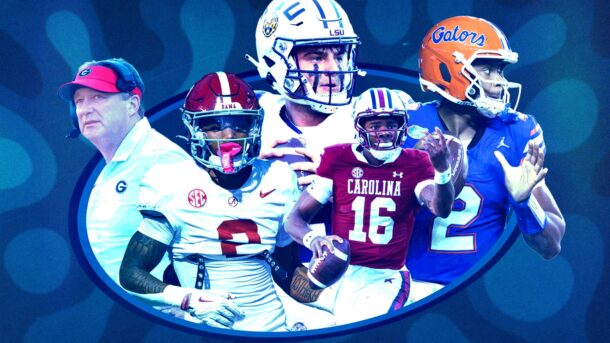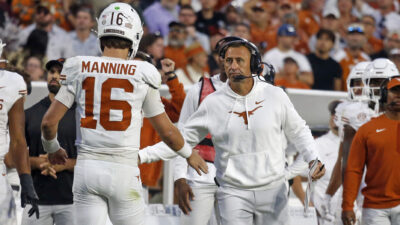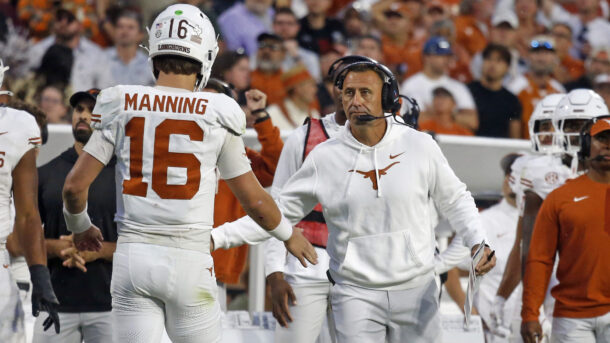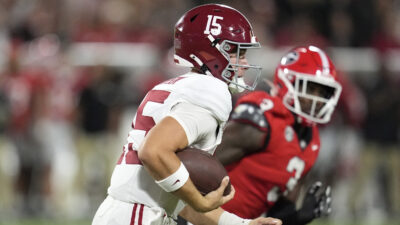4 reasons LSU’s spring passing game optimism isn’t propaganda
By Gary Laney
Published:
As spring practice began Les Miles swore that LSU was going to throw the ball more.
Miles wants to correct what has been a lingering weakness since Zach Mettenberger and his favorite receivers, Odell Beckham Jr. and Jarvis Landry, departed for the NFL after the 2013 season.
It was the first thing LSU displayed when the team briefly opened practice to the media at the start of spring. It was the emphasis for Miles when he talked with reporters later that day.
So what happened when LSU held its first spring scrimmage March 17?
“It wasn’t our most spectacular day” throwing the football, Miles admitted of the closed-to-the-public workout. Instead Leonard Fournette opened the scrimmage with a run the coach estimated at 50 yards (he’s always good to give nice, round numbers when guessing scrimmage statistics).
Inconsistent passing. Spectacular runs by Fournette. Put the evidence together and it would be easy for the cynical Tiger fan to say “more of the same.”
A year ago, LSU finished 12th in the SEC in passing yards under first-year starter Brandon Harris and was dead last in 2014 when Anthony Jennings was the quarterback. In 2013, coordinator Cam Cameron’s first season, Mettenberger and the Tigers were sixth in a pass-happy SEC.
More numbers:
2012: 11th
2011: Ninth*
2010: 11th*
2009: Ninth*
*12-team league.
Add it up and you get one year out of the last seven where the Tigers finished in the top half of the SEC in passing.
Will it ever change?
Maybe more than you think. Here are four reasons why you can expect LSU’s pass offense to be much improved this season:
1. Les Miles remembers how to throw
As hard as this is to imagine for frustrated Tiger fans, there was a time in the not-so-distant past where Les Miles-coached Tigers teams could throw the ball.
“I think you want to have balance,” Miles said this spring, echoing a refrain he’s said time and again.
Until 2009, that’s exactly what LSU had under Miles. His first four teams finished in the top half of the SEC in both rushing and passing. But in 2008, with turnover-prone freshmen Jarrett Lee and Jordan Jefferson running the offense, throwing the ball often led to self-destruction.
Since then, the LSU offense has become — with the exception of 2014 — considerably more conservative.
But it would not be accurate to portray Miles as a coach stuck in his Big Ten roots. His first four seasons in Baton Rouge, the Tigers were in the top third in the SEC in passing yards.
The former Bo Schembechler offensive lineman has an affinity for the power running game. But when the talent is there — like it was with a seasoned Mettenberger and a talented pair of receivers in 2013 — Miles has proven he’s not adverse to throwing the ball.
2. Miles adjusts
When something isn’t working, the Mad Hatter fixes it.
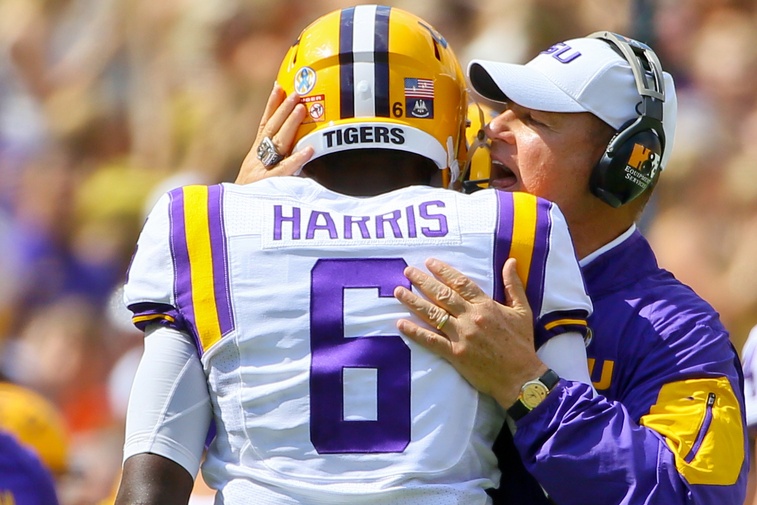
Look at the 2008 season, when the experiment of promoting from within the staff to have co-defensive coordinators — Doug Mallory and Bradley Dale Peveto — proved disastrous. It ended quickly as both Mallory and Peveto were let go after just one season of one of LSU’s worst defenses. Miles brought in John Chavis and things were quickly corrected.
Contrary to popular belief, Miles has also been willing to make changes in the offense. He brought in Cam Cameron as offensive coordinator to help upgrade the passing game in 2013 and it paid dividends with Mettenberger’s 3,000-yard season.
That left Cameron to work with sophomore Anthony Jennings to replace Mettenberger in 2014, a year where the Tigers were dead last in passing offense in the SEC. Again, Miles and Cameron made a change. After getting in some legal trouble off the field, Jennings not only did not hold on to the starting job, he barely got into games as a backup (he’s now out of the program).
Whispers this year are that the staff is evaluating Jennings’ replacement, Harris, in a competition with Purdue transfer Danny Etling.
“He’s another talented guy in the (quarterback) room,” Miles said of Etling. “He makes us better.”
Is Harris in trouble? Maybe. Maybe not. But Miles’ history tells you that if he isn’t performing, being an incumbent doesn’t guarantee you anything. You had better compete to keep your job.
Adjusting doesn’t necessarily have to have a negative connotation. Harris had his best game in his first season as a starter in LSU’s 56-27 win over Texas Tech in the Texas Bowl, throwing for 261 yards and a touchdown. A difference, he said, was having Cameron on the sideline instead of his usual spot in the press box.
“I think you’ll see this season with him on the sideline, our offense will soar and be where we want it to be,” said Harris, implying that the move will be permanent. “Just his voice, him being down there and able to communicate with the quarterbacks, it’s paramount, it’s very important, especially with his years of experience.”
Miles-coached teams will tweak the approach to make players more comfortable.
3. Development matters
Compare Mettenberger’s statistics as a starter in his first and second seasons.
In 2012, Mettenberger had a lower passer rating (128.3) than Harris had last season (130.6). Harris threw more touchdowns (13) than Mettenberger threw in his first year as a starter (12) and had fewer interceptions (six, compared to seven).
What happened in Mettenberger’s second year as a starter? He threw for 3,082 yards and 22 touchdowns and had a through-the-roof passer ratting of 171.4.
We didn’t get to see what a year two might have been like for Jennings, because he lost the job to Harris, who never gave up the position once he took hold of it. Fans are more impatient than ever when it comes to quarterback play, but development still matters.
If Harris can make the same progression in year two as a starter that Mettenberger made, look out.
4. The running game doesn’t have a talent monopoly
One might expect a talent imbalance if LSU was recruiting a one-sided offense — all running backs and linemen, no quarterbacks and receivers.
On paper, that’s not the case.
In Harris, the Tigers have a former four-star prospect who ESPN.com had rated as the nation’s No. 2 dual-threat quarterback in the ’14 recruiting cycle. He is being challenged by Etling, another four-star prep prospect who has started games in the Big Ten for Purdue.
Harris has impressive arm strength even if his mechanics sometimes are shaky. He also has the ability to extend plays with his feet, something Mettenberger did not have.
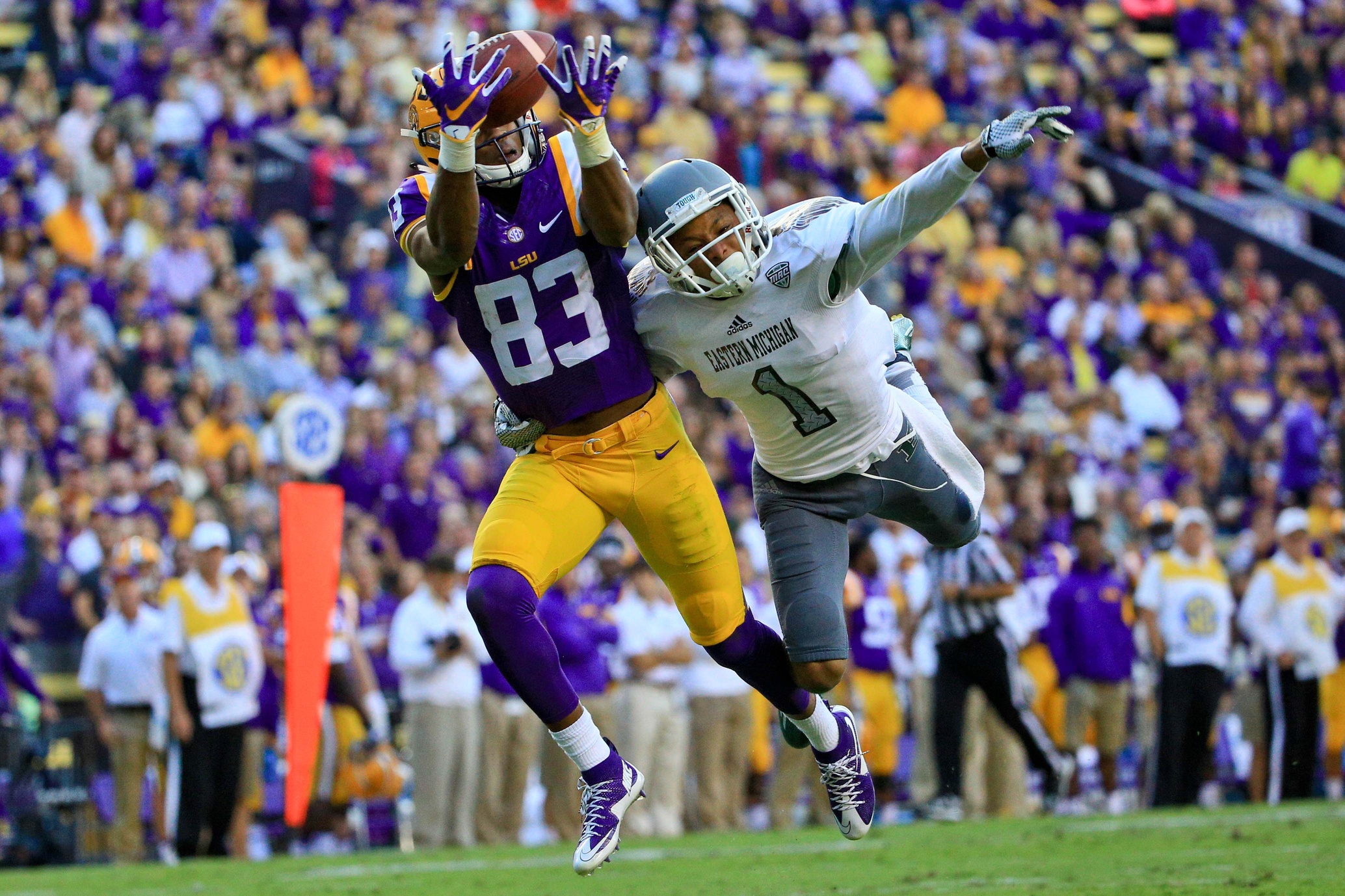
And he’s not throwing to chopped liver. Travin Dural and Malachi Dupre are two of the SEC’s top deep threats and both Dupre and Tyron Johnson were five-star recruits coming out of high school. On the recruiting board, what you see is an elite quarterback throwing to elite receivers.
It’s understandable to scoff at that hype. Harris was 60-for-126 passing with three touchdowns and five interceptions in the Tigers’ last four regular-season games. Dural and company were doing their best to keep those numbers down with repeated drops.
But it’s hard to deny the talent. Harris can, in the jargon of the moment, “spin it” with the best of them. Dupre is a (tall) matchup nightmare. Dural and Johnson can flat-out fly and make plays.
One of these days, even with the talented Mr. Leonard Fournette lined up behind them, you figure that bunch will figure things out.
And when they do, don’t expect Miles to get in their way.
